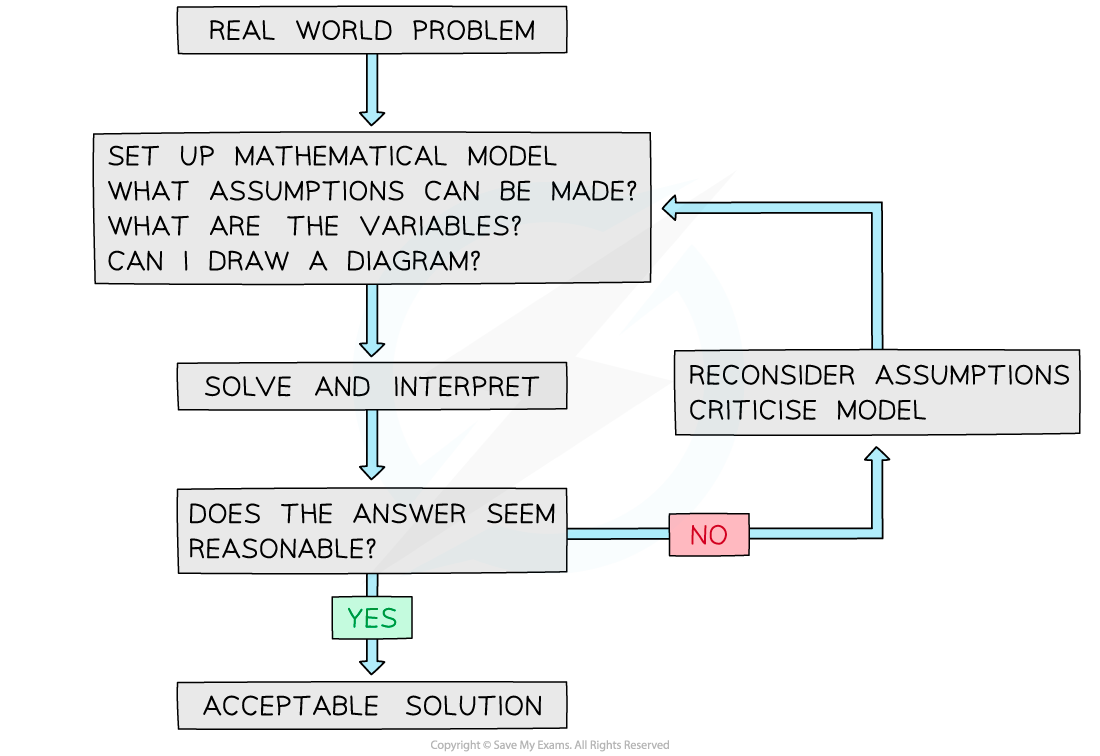Modelling Assumptions (AQA A Level Maths) : Revision Note
Did this video help you?
Modelling Assumptions
What is modelling in Mechanics?
Mechanics uses modelling to solve problems in real life situations
We use assumptions to simplify real life problems in order to turn them into equations or graphs that can be solved
We will sometimes need to criticise or refine our assumptions to improve the model

Modelling Assumptions in Mechanics:
There are many different modelling assumptions that can be made when dealing with real life situations
Different assumptions will be needed for different models
The assumptions you make will affect the calculations in each problem differently

What types of modelling assumptions are there?
Gravity is constant and vertical
Air resistance is usually modelled as negligible and can be ignored
A smooth surface has no friction
A rough surface has a frictional force between the surface and any object that makes contact with it
A particle has negligible dimensions, therefore forces will all act on a particle at the same point
A rod or a beam should be treated as a long, rigid particle
A uniform object’s mass is distributed evenly
A light object has zero mass
An inextensible object cannot be stretched
Worked Example
Two blocks, A and B are attached by means of a light inextensible string running over a smooth pulley. Block A has mass 0.7 kg and is accelerating along a smooth horizontal surface, block B has a mass 0.2 kg. Both A and B are modelled as particles. State how the following modelling assumptions can be used in your calculations.
a) A and B are both particles.
b) The string is light.
c) The string is inextensible.
d) The pulley is smooth.
e) The surface A is moving along is smooth.

Examiner Tips and Tricks
Make sure you fully understand the definitions of all the words in this section so that you can be clear about what your exam question is asking of you.

You've read 0 of your 5 free revision notes this week
Unlock more, it's free!
Did this page help you?
